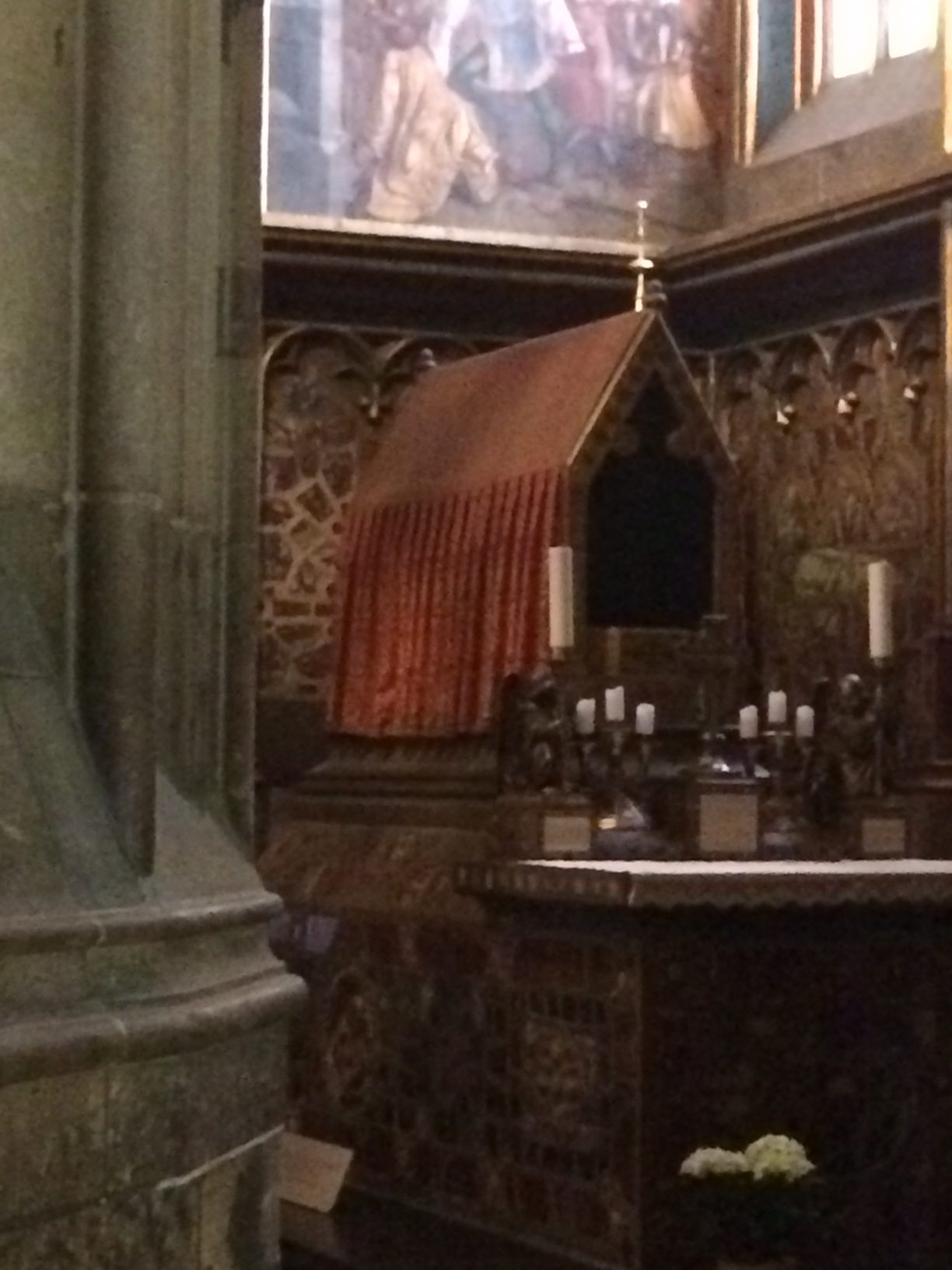
The casket containing the relics of St. Wenceslaus in the chapel of the Prague cathedral. (photo by S. Morris)
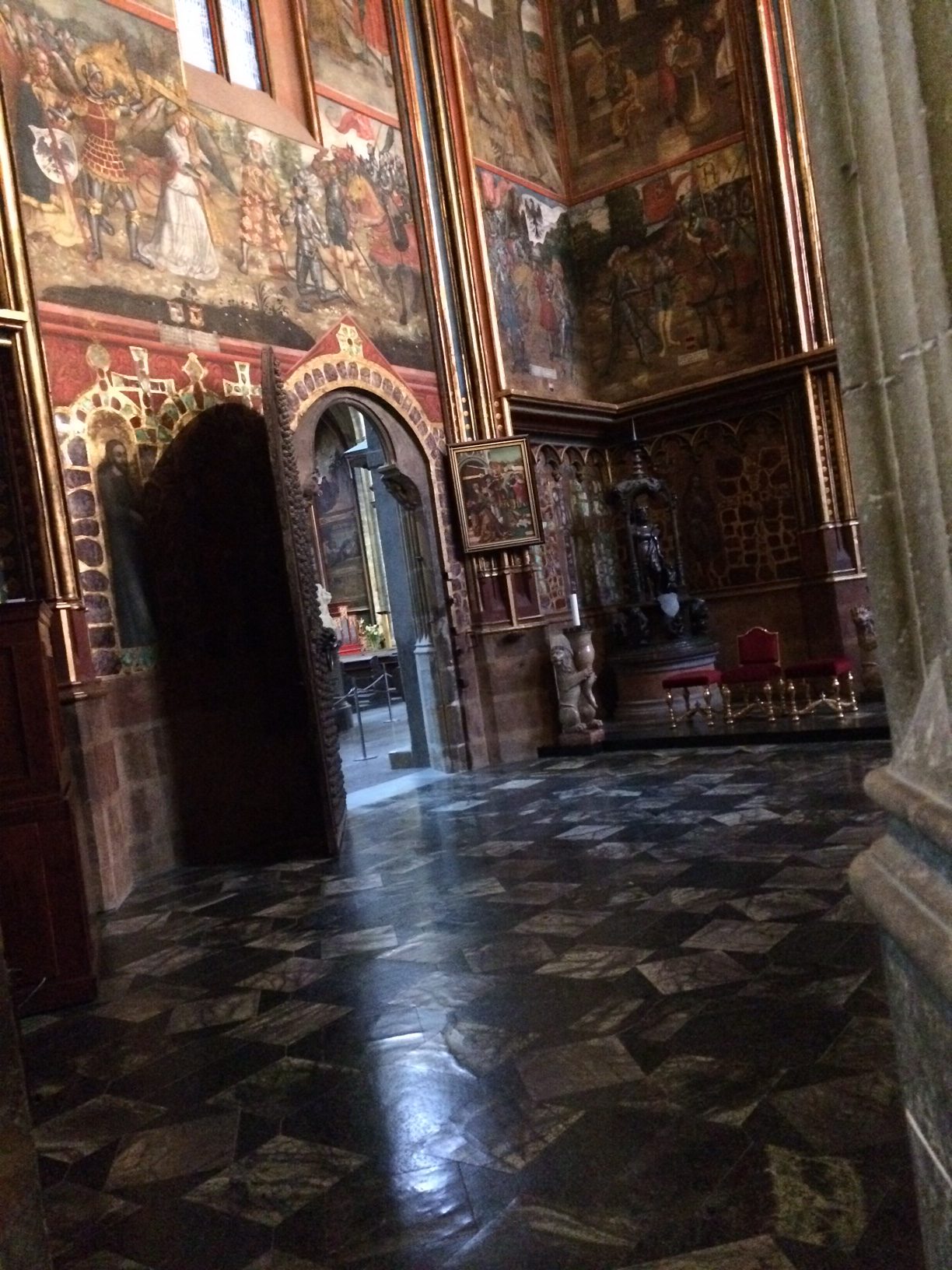
Looking across the St. Wenceslaus chapel in the Prague cathedral; note the wooden door taken from the church where St. Wenceslaus was murdered . (photo by S. Morris)
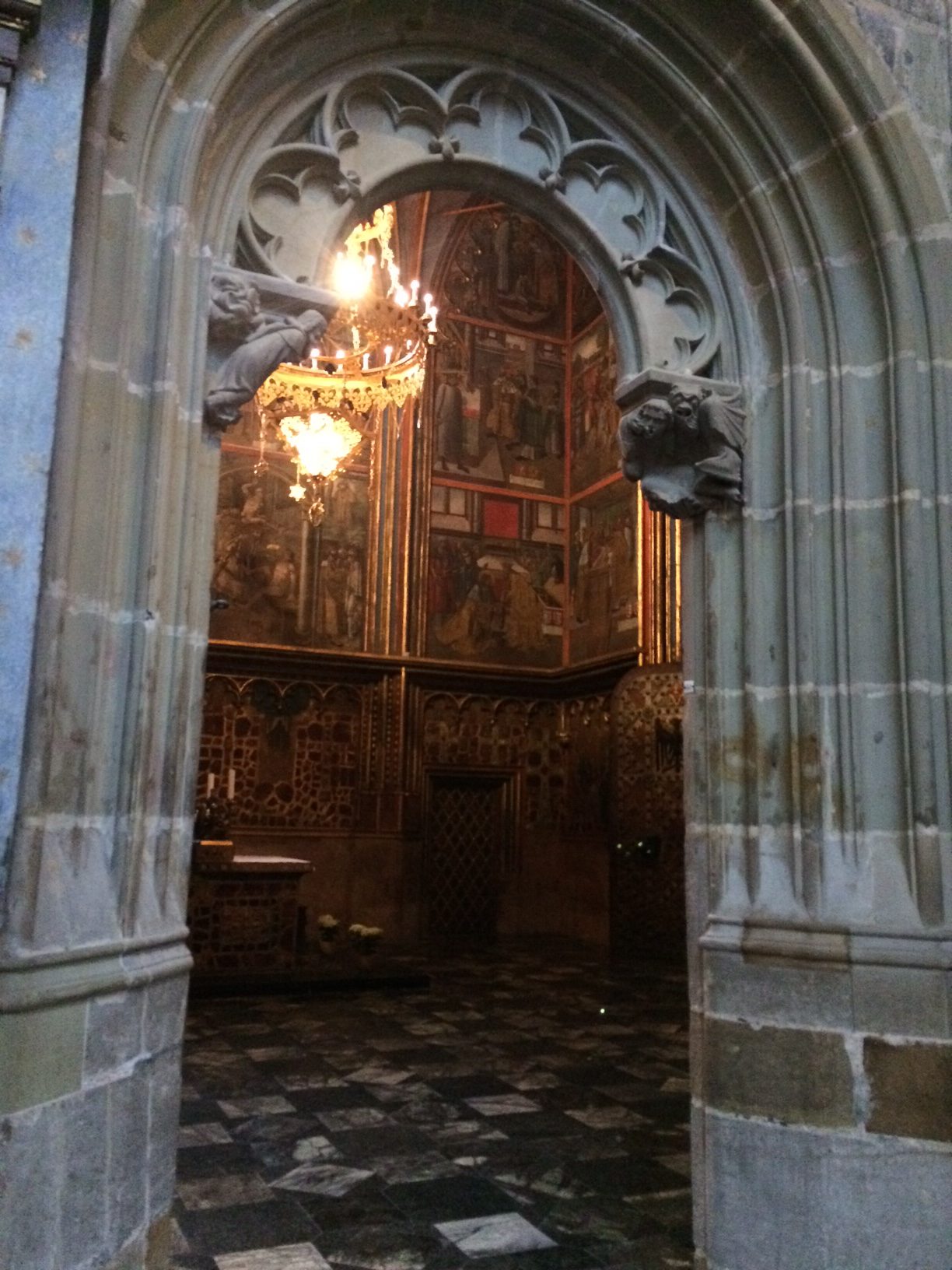
Looking into the chapel of St. Wenceslaus in the Prague Cathedral. (Photo by S. Morris)
The chapel of “Good King Wenceslaus” in the Prague cathedral is a dazzling display of both royal and apocalyptic glory! The good king–perhaps best known for his Christmas carol was actually the duke of Bohemia but he was the functional equivalent of a king–was murdered by his pagan brother Boleslav in AD 935. Wenceslaus (in Czech, his name is “Vaclav”) was murdered by hired killers as he was arriving at a country church for the baptism of his nephew, Boleslav’s son; Boleslav had invited Wenceslaus to be the boy’s godfather as a pretext to get Wenceslaus out into the country so that he could be more easily murdered. Boleslav seized the throne and was a cruel, hedonistic ruler. He died in AD 967, after ruling for more than 30 years. But he was forced by popular opinion to have his brother Wenceslaus’ body brought back to Prague in AD 938 and buried in a small church near the castle. Wenceslaus was acclaimed as a saint.
The famous emperor Charles IV–who built the great Charles Bridge as well as many of the beautiful buildings that we still see in Prague–had a chapel built for the relics of St. Wenceslaus in the new cathedral of St. Vitus that was being built in the 1300s.
The design of the chapel is based on the description of the heavenly Jerusalem in the Apocalypse, commonly known as the Book of Revelation. The chapel is square, just as the heavenly city was described, rather than rectangular. The walls of the chapel are studded with the precious jewels the walls of the heavenly city were said to be built with. There is a small door in one corner which leads to a stairway which leads to a small room in which the crown jewels are kept; this door has seven locks and the seven keys–held by various important officials in the government and cathedral staff–are needed to open it. These seven locks and keys are based on the locks and keys held by seven archangels in the Book of Revelation. The windows of the chapel fill the square room with light just as the Heavenly Jerusalem was said to be filled with light. The massive doors to the chapel are the same doors of the country church that Wenceslaus was entering as he was murdered by his brother.
The chapel of St. Wenceslaus reproduces the splendor of the heavenly Jerusalem because the saints are thought to be the first citizens of the New Jerusalem. The first saints said to inhabit the heavenly city are the martyrs–those killed for their faith–and St. Wenceslaus is the first martyr of the Czech region. He was also thought to be the perfect model of a good king who cares for his people more than for himself and the living image of Christ the King who gives up his life so that his people might live. When I was in Prague in early April, I was struck again by the stunning beauty of the entire cathedral and of the chapel of St. Wenceslaus in particular.

Chapel 1
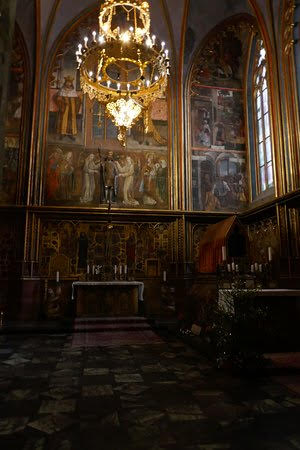
Chapel 2
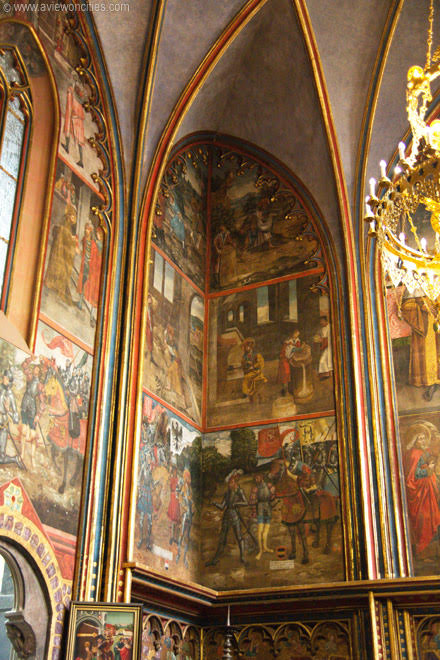
Chapel 3
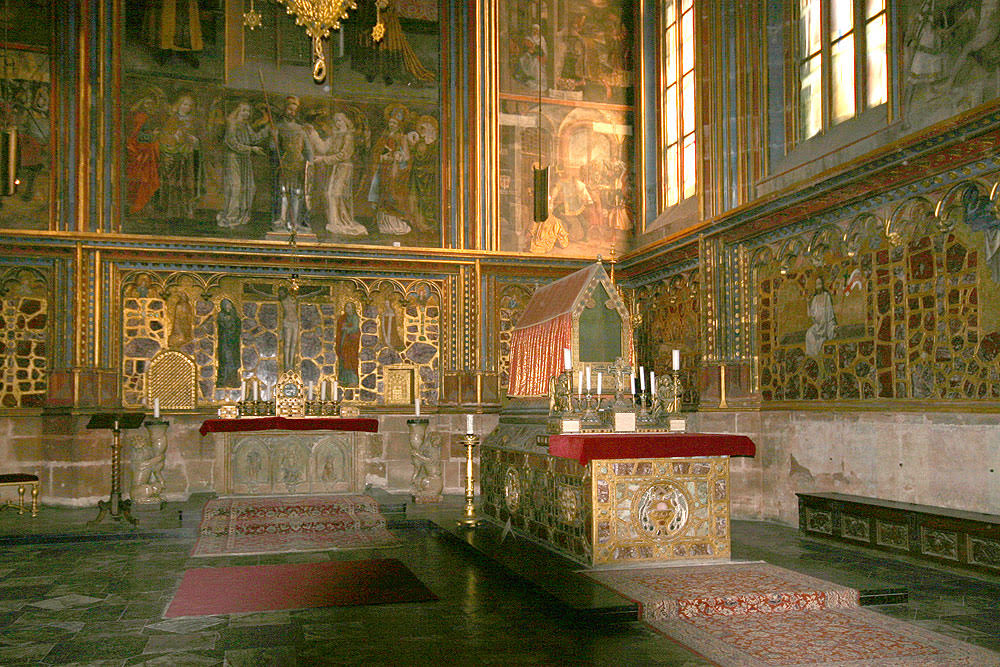
Chapel 4
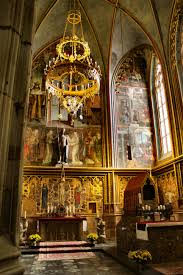
Chapel 5
